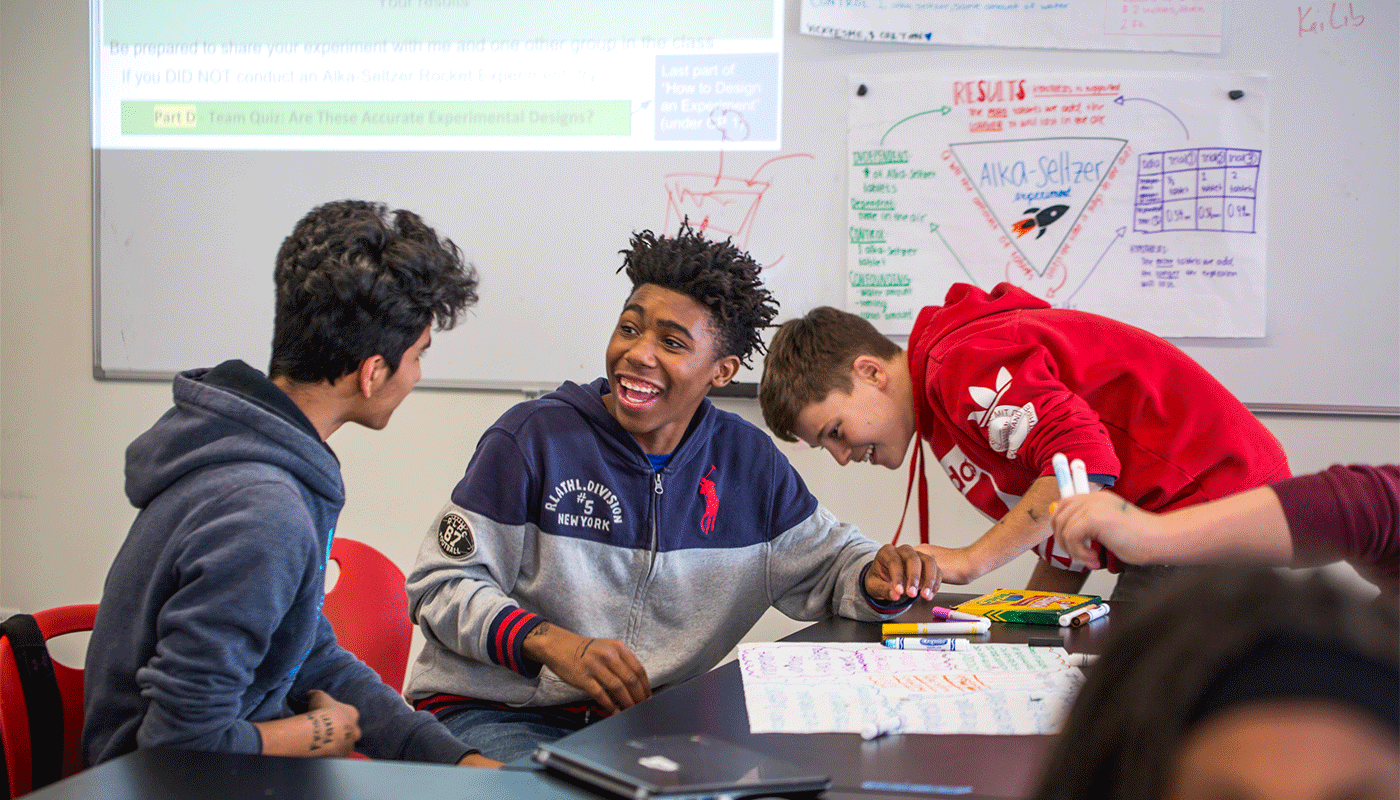
We live in a world of projects. Think about it: Whether it’s planning your wedding day, a big presentation for work, or a budget analysis — they’re all projects. While years of experience play a major role in advancing your career (and life), we all start somewhere — and most of us learn by doing.
With each project, we set goals and make plans to reach them. We also use our knowledge and skills to accomplish each task as we work toward reaching our goals. For this very reason, more schools are turning to project-based learning.
What is Project-Based Learning?
Project-based learning combines learning and doing. With this teaching approach, students are self-directed learners; they combine the topics they’re learning in class with real-world skills like collaboration, analyzing evidence, and articulating a clear point. This modern teaching style is less lecture- and memorization-based, and empowers students to work independently or with a group.
Typically, teachers present students with an open-ended question, challenge, or problem. But here’s where it gets interesting: Instead of giving students the answers, teachers guide them to find a solution on their own.
That means teachers are able to allow those who already understand the subject matter to move on while they assist groups who need more support. By applying this interdisciplinary approach to learning, teachers can meet students where they are.
Still lost? Here’s an example:
In a conventional classroom — let’s say physics — students learn the formula for motion through a lecture and apply it in a word problem. In a project-based learning classroom, students might be instructed to create a launching apparatus. They still learn the the formula for motion, but they then apply that formula to get their mechanism to hit a target.
Teamwork Makes the Dream Work
Whether you’re in a college classroom or on the job, leadership and the ability to rally a team are what give you the upper hand in any professional environment. Project-based learning teaches students to work together and manage an extended set of tasks by a specific deadline, even when there are conflicting personalities within the group.
Students are often put in groups with other kids who are learning at the same pace. They’re given a set of goals to reach, and they learn how to delegate tasks according to each group member’s strengths. Not only do students gain communication skills, but they learn how to listen to one another in order to reach a solution.
If There’s a Problem, They’ll Solve It
We are faced with a number of problems, big and small, every day. Whether it’s missing your freeway exit or having to step in for a colleague who calls in sick before a big meeting, we’re expected to find solutions to every problem we face. It’s called resilience.
Any project comes with unexpected twists. Project-based learning prepares kids to be adept critical thinkers and teaches them how to work through a problem from beginning to end. If they encounter an issue, they have to work together to create a solution, even if it means having to start over again.
United States of Independence
If there’s something we all want for our kids, it’s for them to have a voice. We want them to effectively advocate their actions, ideas, and opinions while staying accountable for them, too.
Since project-based learning allows students to practice self-directed learning, they’re able to take control of their education. This encourages them to take initiative and take pride in their work.
But working independently can also be tough. So, how does a project-based learning classroom bridge that gap? Project-based learning prepares kids to find the truth by asking questions, analyzing information, and producing a product that showcases their understanding of a topic.
And because students are constantly collaborating, they’re often inspired to ask questions they might not have without the perspective from a valued peer member.
Altogether, this teaches them that it’s okay to ask for help and brainstorm with peers to reach the best results possible. It boosts their self-confidence and ability to speak up for themselves, an especially important skill in both college and career.
Need More Proof?
It’s no secret that students aren’t as motivated in the classroom as they could be. In fact, Indiana University conducted a High School Survey of Student Engagement that confirms it. Here’s what they found:
- 81% of students said the material they were learning wasn’t interesting
- 42% of students said the material wasn’t relevant to them
- 35% of students said they had little interaction with their teacher
A project-based learning environment combats every one of these problem areas. According to a study from Harvard University, curiosity is just as important as intelligence when it comes to succeeding in life. Project-based learning prepares kids to be curious and ask their own questions, work well with peers, and truly engage with their work. These are all skills they can use to their advantage in their college and professional careers — but most importantly — life.
To see how project-based learning is changing students’ lives around the nation, click here.

